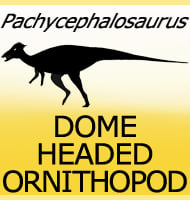In Depth
The Carbonemys holotype remains were first discovered in a coal mine, and since coal is essentially fossilised carbon, the name Carbonemys was chosen for the genus. The form of the shell is very interesting as it indicates that Carbonemys would have been a member of the Pleurodira, a group better known as the ‘side-necked turtles’. Side-necked turtles tend to have proportionately longer necks than other turtles, which means that they are too long to retract inwards under the shell. Because of this problem, these turtles instead bend their necks to one side so that they lay against the body and under the ridge of the carapace (upper shell), hence the name ‘side-necked turtle’.
Of course, being of a physically large size means that not many predators would pose a threat to you. However, even though the dinosaurs seem to have gone extinct from South America just a few millions of years before the first known of appearance of Carbonemys, giant super predators had already appeared on the landscape. For example, the giant snake Titanoboa, which at the time of writing may be the largest snake so far discovered, is also known from the same formation as Carbonemys. The presence of a giant turtle and a giant snake at the same time as one another is a good indication as to the kinds of fauna that rose up to replace the ecological gaps that were left behind by the extinction of the dinosaurs, and would continue to be quite dominant until the combined rise of mammals and birds.
Skull remains of Carbonemys are also known, and the form of the skull indicates that Carbonemys had a very strong bite. One idea is that these jaws may have been used for crunching through the armoured bodies of crocodiles such as the genus Cerrejonisuchus, which as the name suggests is also from the Cerrej�n Formation. However it must be remembered that the mouth of Carbonemys could have been used to kill either animals or crop vegetation, or perhaps even both. We also can’t look to other modern turtles of the Pleurodira because some genera are carnivorous while others are herbivorous, which can only further confusion as to the speculated diet of Carbonemys. Only the stomach contents of multiple individuals of Carbonemys could give us a clearer idea as to the exact diet of this genus.
Further Reading
- New pelomedusoid turtles from the late Palaeocene Cerrejon Formation of Colombia and their implications for phylogeny and body size evolution. - Journal of Systematic Palaeontology 10(2):313-331 - E. A. Cadena, D. T. Ksepka, C. A. Jaramillo & J. I. Bloch. -2012.










